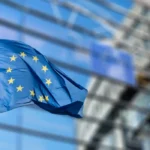Since February 2022, the Russian war against Ukraine has revived the question of the enlargement of the European Union (EU). Questions emerge regarding the relevance of the institutional mechanisms in force for the accession of new Member States. The worrying situation in Ukraine, at the forefront of European news, is part of a broader context involving other similar situations, such as those in Moldova, Georgia and the Western Balkans.
These discussions question European citizens about the effectiveness of enlargement mechanisms: do accession procedures correspond to current issues, or do they face challenges that require reassessment with planned future enlargements?
A delicate puzzle in the current geopolitical context
During the last European summit of the year, on December 14, 2023, the European Council approved the opening of accession negotiations for Ukraine and Moldova, and validated Georgia’s candidate status.
The Union is nevertheless faced with a complex dilemma: how to ensure Ukraine’s membership in the EU, without discouraging the Ukrainians with a long and technical process? How to limit painful adjustments, without risking neglected expansion, likely to destabilize the EU? The difficulties encountered during the 2004 enlargement are still widely divisive, thus increasing the risk of a poorly prepared Ukrainian accession.
Nine countries, namely Albania, Bosnia and Herzegovina, Georgia, North Macedonia, Moldova, Montenegro, Serbia, Turkey and Ukraine, remain officially candidates for membership of the European Union . However, although Kosovo has applied for 2022, the country has not yet been recognized as a candidate state by the EU.
The European Union has been, from its beginnings, an ambitious project aimed at promoting peace, stability and cooperation among European nations. Over the decades, several countries have expressed their willingness to join the supranational community, thereby triggering the need to reform current membership mechanisms.
Behind the scenes of the membership process
Article 49 of the Treaty on the EU (TFEU) defines the EU enlargement process. The agreement stipulates that any European state respecting the fundamental principles of the EU (article 2 including human dignity, freedom, democracy, etc.) and committing to promoting them, can request membership.
Any country wishing to join the EU officially presents its request by submitting it to the Council of the European Union. The request is finalized by the signing of an “association agreement”, establishing a free trade zone with the EU. This is a first step allowing the State to begin to integrate Union rules into its legislation, before adopting them in full.
Once the official application for candidacy has been submitted, the 27 vote unanimously within the Council of the EU before transmitting it to the European Commission for subsequent unanimous approval. This process can continue over time: for example, although Bosnia and Herzegovina submitted its application in 2016, the Commission’s opinion was only delivered in 2019. On the other hand, the examination of the application of Ukraine only lasted a few weeks. How can we explain such a difference in treatment? Laurence Boone, Secretary of State for Europe, responded “We must get rid of the question of the date, and work instead on ambition. If the reforms are implemented quickly by these countries, then the accession process must be very rapid. This is based on merit and progress made […]”. [1]
After the agreement given by the Commission, the status of “candidate country” must be granted unanimously by the Council. Note that the attribution of candidate status in no way guarantees the subsequent acceptance of the country within the Union. As soon as candidate status is acquired, the integration process begins. A pre-accession strategy is deployed to familiarize the candidate country with EU procedures and policies. European leaders then check that the candidate state adequately respects the 4 Copenhagen criteria (political, economic, institutional, integration capacity). Finally, the candidate country must attest to its ability to apply European rules and procedures at national level.
In the final phase of the negotiations, unanimously approved by the Member States during the European Council, each candidate develops its position on the 35 chapters of the Community acquis (all European legislation), thus describing its approach to integrating them into its legal framework. and institutional. This development is the basis of the negotiations, and underlines the candidate’s commitment to the adoption and application of European laws, while putting in place the necessary internal reforms (fight against corruption, economy, public administration).
If the country has met the demands of the 27, the conclusion of the negotiations is finalized by the drafting of an accession treaty, then submitted to the approval of the heads of state and the agreement of the European Parliament. Accession takes effect on the date of entry into force of the treaty, after ratification by all signatories, thus marking the transformation of the candidate country into a member state of the European Union.
Towards a bigger EU: challenges and strategies for 2024
In September 2023, Jean-Louis Bourlanges, president of the Foreign Affairs Committee at the National Assembly, presented a report on the management of the EU enlargement process. [2] According to the president, reforms of the institutions for future enlargement are essential for the EU.
Mr. Bourlanges recommends respecting the time necessary for the adjustments of each candidate country, while taking into account the tense geopolitical context. The report proposes gradual accession in three phases: political adherence to the principles and objectives of the Union, followed by progressive implementation of policies via specific agreements with the Commission. Finally, after a controlled process, new members could fully participate in the institutions of the Union.
In a follow-up document presented to European Affairs ministers on September 27, 2023, Vienna drew up a list of policy areas (single market, transport infrastructure, energy, etc.) in which candidate countries could be authorized to cooperate with the EU before even to join as full members. This change would allow them to benefit from aspects of the EU well before having the definitive answer of full membership.
Following the European Council summit in December 2023, the EU set the objective for 2024 of allowing a Union of between 30 and 35 members to function without institutional obstacles. According to many European leaders, including Emmanuel Macron and Olaf Scholz, enlargement must be accompanied by profound reforms of the EU’s operating rules.
This article is originally published on taurillon.org






